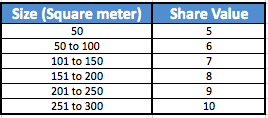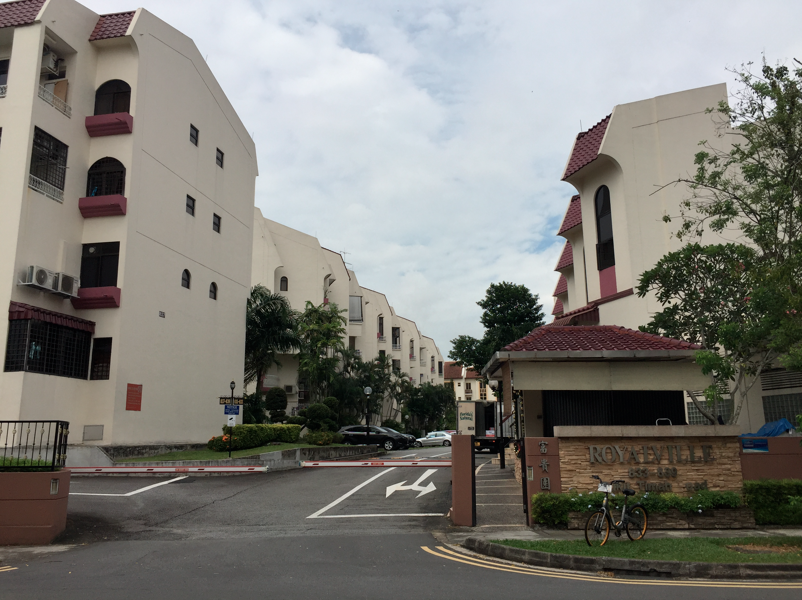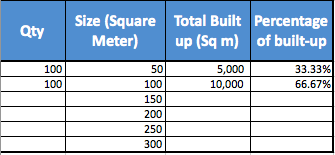Enbloc Sales process – 8 Potential Conflicts and problems
Enbloc redevelopment can be either good or bad. There are many pitfalls along the way of going Enbloc. In order to proceed to the Enbloc stage, you must obtain 80% of the home owner’s (share value and area value) consent within a stipulated period for properties older than 10 years.
The rules are quite onerous and stringent and is governed by the Land Titles (Strata) Act – section 84A. Along the years, additions and amendments by the ministry of law to the enbloc law have made the Enbloc rules even tighter.
With such onerous regulations, this means that more often than not, the ones agitating for enbloc sale are people with the knowledge about it, and they could be “serial enblockers”, lawyers, valuers, retirees in some cases who has lots of time on their hand, people with multiple properties and potentially property agents who are affiliated with enbloc specialists, etc. These people have the unfair advantage of time on their hands, knowledge and possibly working within a related industry and often have started meeting and gathering like-minded home owners to form an unofficial core group and gel together strongly. The proponents of Enbloc already have an advantage to get an Enbloc Sales Committee formed and have already pre-planned and deliberated for a long time.
It’s akin to some country’s political ruling party having “campaigned” for 1-2 years prior to an actual election (maybe they do not call it campaigning, they call it a different name), and then only to declare that the election period is only 11 days, opponents have no time to prepare for the campaigning.
- Home owners who have refinanced their home loan to Locked-in Packages suffer Penalty
Many of the home owners who refinanced their home loans to fixed rate home loans or those with 2 years locked-in or 3 years locked-in period will incur full home loan redemption penalty. This penalty is usually 1.5% of the loan amount. This tend to affect those who have bought their properties in recent years as their loan size tends to be bigger and their corresponding home loan redemption penalty higher.
If your home is at risk of Enbloc, you could consider a home loan where there is no locked in, but that would entail higher housing interest rate cost. Perhaps the next best option is to look for packages with a waiver of Locked-in penalty due to sale of property. Contact a mortgage broker to assist you to find those packages with waiver of locked-in. For those of you who do not know what is a mortgage broker, you can read here.
- Home Owners Who Oppose Enbloc have little time to canvass for Votes
When an Extra-ordinary General Meeting (EOGM) is scheduled (EOGM), many home owners who do not agree with Enbloc have very little time to get together to rally for votes to appoint people to get into the sales committee.
With election, we all know there will be election, so it’s fairer and everyone prepares for it. With Enbloc, we somehow know that some Enbloc may happen, but we never really know when. So those who are happily living in these older condominiums may be blissfully unaware and unprepared of the “plot” to enbloc and collectively sell their beloved homes.
- Sales Committee likely ends up with many Pro-Enbloc people.
I have heard that some of these pro enbloc sales home owners have rounded up enough proxy votes (from those owners who do not stay at the unit or are overseas) and supporters to vote for their preferred candidates into the Sales committee during an Extra-ordinary General Meeting (EOGM) to start the EOGM process.
This kind of preparation is something that those who are against enbloc cannot match. There are the home owner database that these agents are able to get their hands on and start the “campaigning” way ahead of time, especially for those developers where the owners do not stay there.
Any potential conflicts of interests of any sales committee members needs to be declared, however even if they do not have any conflict of interest in behaviour, these pro Enbloc collective sales committee (CSC) members already presents conflicts in their positions where they are obviously Pro enbloc.
A collective sales committee (CSC) and property consultant is supposed to evaluate and obtain the best deal for all the home owners which I am certain they will do and discharge of their duties properly.
However the sales committee could very well be made up of people who are too eager for a sale, and this could perhaps cloud their judgement.
The breach of Method of apportionment (MOA) in the Harbour view and Thomson view case where incentive payments were made by the property consultant to the home owners is a real life example of such breaches although the collective sales committee were not found to be guity.
Apart from being too sweet talking, misleading, confusing or the deploy of outright incentives (whether known or unknown) to home owners, such sales committee members could also easily turn nasty and handle objectors in a heavy-handed matter due to their personal positions, giving rise to the perception of unfairness. Many times it could get very personal.
Those who are against the Enbloc may not have sufficient energy or drive to take on such an onslaught from an organized group of like-minded people.
So the enbloc redevelopment is really a war between a well trained, weaponised army against a group of loosely aligned and unequipped citizens. There is little chance for those who object.
Perhaps to escape all these, people should really consider living in landed property where they only have to worry about the government building roads into their house as compared to having your neighbours trying to sell your home.
- One sided gathering of Collective Sales Agreement (CSA) Consent
Upon setting up a sales committee, the process to gather consent of Collective Sales Agreement officially starts. This is given a period of time, usually 6 months to achieve the required thresholds. So home owners who agree to a collective sale gradually creep up to reach the required Collective Sales Threshold.
This one-sided arrangement causes undue emotional strain to objectors of the collective sale as some home owners gradually defect one after another to sign on the dotted line and add towards the collective sales threshold.
If those who agree can sign a Collective Sales Agreement consent, maybe objectors should also be allowed to sign a contract of “Objection to Collective sales agreement” that similarly lasts the duration of the process.
This would be more fair as objectors can lock in the percentage of objectors, once they object, they cannot sign on the agree list. This would help secure the objectors and thwart the Enbloc process. Once the objectors go above a rejection threshold of say 20%, the Enbloc process would automatically be called off.
Those who want the status quo tends to be passive, but they are forced to go through the entire ordeal to resist the process, incur emotional stress and be bullied into submission.
- Too strongly worded one-way Consent to collective sales – Too much power given to negotiate a private treaty with buyer
After the collective sales committee (CSC) reaches the required consent threshold, the open tender or auction must be held within a stipulated time. After the open tender or auction, an independent valuer is to assess the total value of the development as a benchmark or reference.
NOW this is the dangerous part.
Why is there no additional vote if the reserve price is not met? If the reserve price is $500m and the valuation is also $500m, and the tender did not reach $500 million, but came in as $400m, do we reject the enbloc bid and consider it a FAILED Enbloc attempt?
Apparently that may not be the case as the Collective Sales Committee (CSC) then may within 16 weeks enter into a private treaty contract with the buyer. (Reference: Denton Rodyk)
Let’s say, after that the collective sales committee agree on $420 million and sold the development. Who is to say what is a fair value?
Is there another vote to agree or disagree on this price?
Is there a safeguard as to how much the private treaty sale can deviate from the valuation or reserve price?
Why must the agreement be open-ended? Even if the collective sales committee has exercised their duty and fair judgement, where do we draw the line on how low the price can go?
This is particularly dangerous considering that many enbloc collective sales committee members may already be pro enbloc sales and may be too eager.
- Enbloc Sales – Method of Apportionment (MOA) of Sales Proceeds
The proposed Enbloc reserve price is worked out by some “experts”, presumably it should be fair.
But here is how it will never be seen as totally fair.
- How do you adjust for facing of property?
- How do you adjust for the value of renovation done?
- How to apportion the sales proceeds for share value?
- How to apportion the sales proceeds based on built up size of unit?
- Share value and built up size is not uniform. A 50 square meter unit has 5 shares, but a 100 square meter unit does not have 10 shares of common land but only 6 shares of common land.
- Bigger units have only been paying slightly more in share value for maintenance over the years.
Share Value
Perhaps using the Share value as a way of apportionment is not totally fair.
In a strata-titled condominium development, the share value is used to determine the share of the common land each subsidiary proprietor (SP) or commonly referred to as Home owner owns for the calculation of management corporation strata titled (MCST) fees, commonly known as “maintenance fees”.
Share value of each condominium unit is determined by Building and Construction Authority (BCA): –
The share value increases by 1 for each 50 square meters.

Table 1: Building and Construction Authority (BCA), floor area of strata titled property and share value,
BCA, (https://www.bca.gov.sg/bmsm/others/strata_living.pdf)
The share value was initially determined based on the size of the unit and the estimated resources and strain on common property upkeep and maintenance and was not designed for enbloc sale. A family occupying 50 square meters may pay 5 shares for maintenance and upkeep of common property while that of one occupying 100 square meters may pay 6 shares for maintenance as the load on upkeep and maintenance is likely not doubled but incremental as a bigger unit tends to have more people staying in it.
Using purely share value to distribute proceeds is contentious. Using share value to arrive at collective sales agreement consent is also problematic as those with smaller units that made up 1/3 of the built up size have 45.45% of the voting power.
Table 2: Share value of strata titled units if based on Share Value method, iCompareLoan.com
The smaller units will argue for apportionment of the sales proceeds to be distributed based on share value. In a condominium where there are more smaller units and lesser bigger units, the interest of the bigger unit home owners may be trampled upon.
Table 3: Percentage share based on Built-up value, iCompareLoan.com
If it is based on built-up value, those who own smaller units will feel It is unfair as they pay a higher per square feet price for smaller units compared to bigger units, so it is unfair for the smaller unit home owners.

Table 4: Percentage share based on prevailing market valuation, iCompareLoan
If the sales proceed apportionment is based on the valuation, this would ignore the fact that bigger units have long paid much more maintenance fees. And also there will probably be a need to do a valuation for each of the units, regardless if they are the same type or not as the valuation is different for different facing, height of the unit and renovation, feng shui and design of the floor plan.
If we were to consider a combination of all 3 methods, then what percentage mix would be fair? This is very contentious.
- Odds are unfairly stacked against Objectors to an Enbloc sales
Any subsidiary proprietor (SP) also known as home owner can object a sale for some of the following reasons: –
- “Not acting in good faith” due to sale price apportionment methodology.
- Undeclared Relationship between the sales committee and buyers and sellers, or conflicts of interests.
- Non even handedness in dealing with objectors.
- Financial loss from the transaction.
An objector basically has very little rights, and any lawsuits they raise against the sales committee is at their own legal cost. If they were to lose the lawsuit, this would set them back by hundreds of thousands of dollars. As they have no platform to launch an objection, it is expected that most objectors will be bullied into silence as many would be worried about the cost of losing such a law suit.
On the other hand, the collective sales committee (CSC) is not afraid of any law suits, because all or any cost involved in such law suits will be taken off the sales proceeds and divided amongst all the home owners in case of a successful enbloc.
There seems to be no provision within the Land Titles Strata Act (LTSA), section 84A that provide for the cost of any home owner legal suit against the Collective Sales Committee to be shared amongst all the units if the sale were still to proceed successfully despite the objection suit.
- Wastage of a Country’s resources
Most buildings these days are built to last easily 30 to 60 years without major structural issues.
Enbloc sales process starts when the following condition is met: –
- Less than 10 years old development – 90% of the owner’s share and area value.
- Greater than 10 years old development – 80% of the owner’s share and area value.
URA master plan is Singapore’s long term planning of land use for the next 20 to 30 years, so surely there is no need to pull down a building to rebuild within 10 or 20 years as it is too short a planning horizon.
And most buildings are also generally in good condition even after 10 years or even 20 years. If a building is going for Enbloc after 11 years, this is obscene wastage.
Unless a building is unsafe for occupation there is no need to set the Enbloc threshold so low. In any case, the Building and Construction Authority (BCA) can order remedy works if an older development needs to be remedied for safety.
Proposed Enbloc Development age and voting threshold: –
- Development less than 10 years cannot be put for enbloc;
- Development between 10 to 20 years old to require 90% of the share and area value before Enbloc can be passed.
Talk to www.iCompareLoan.com or share your story with us at www.iCompareLoan.com/contact or SMS Paul at 9782 8606.









